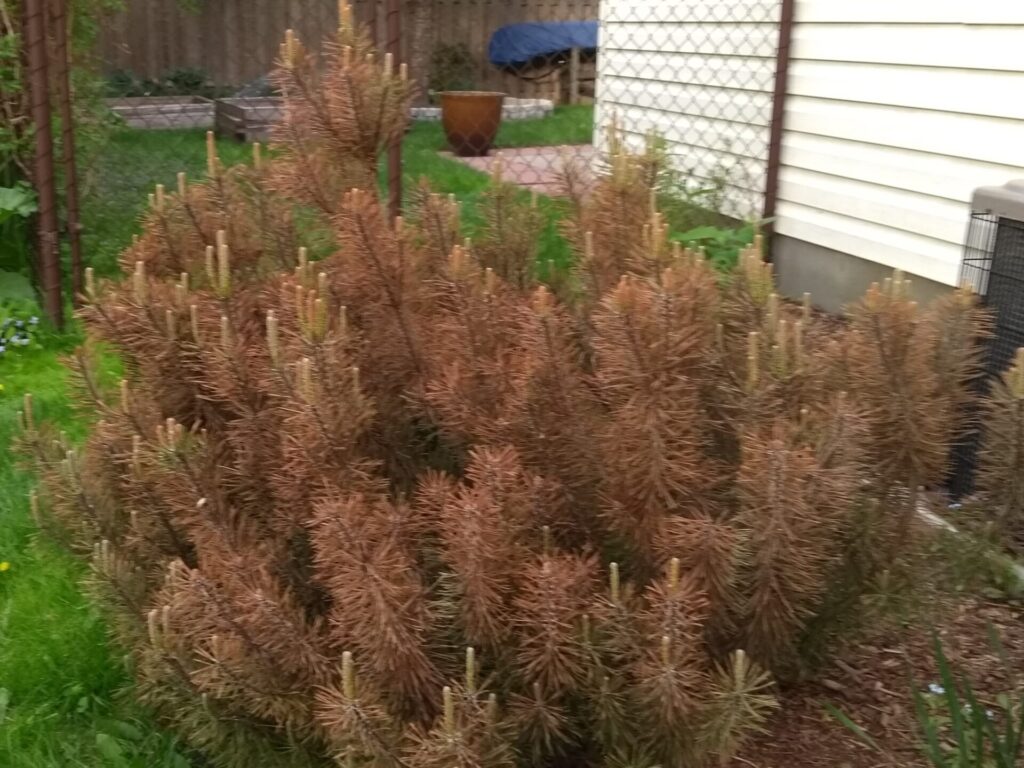
I sprayed two mugo pine shrubs (about 4 foot diameter, 4 3 feet tall) with dormant oil in the early spring. They’re now mostly orange, but the spring ‘candles’ have emerged. Is there anything I can do to revive these lovely shrubs? Will they survive?
Thank you for contacting the Toronto master gardeners with your question concerning your mugo pines.
Horticultural oils first became popular as a way to control pest problems on fruit trees. The primary way horticultural oil kills insects is by suffocating them. The oil blocks the spiracles through which insects breathe. It also disrupts the metabolism of insect eggs and the ability of some insects to feed, causing them to starve to death.
The application of horticultural/dormant oil is both time and temperature specific. It should not be applied if the temperature is below 4C or if the temperature approaches freezing soon after application of the dormant oil spray. It should be applied early in the season just before either leaves or flowers show signs of swelling or breaking open. You don’t want to apply it too early, since the insects need to be active and breathing, in order to be affected.
Mugo pines are affected by pine needle sclae (Chionaspis pinifoliae,). Light infestion of this pest usually goes unnoticed and causes little damage. As the population increases the needles become covered with white scale insects, which suck the juices from the needles. Light infestations can be controlled by pruning out the infected branches. As with most diseases maintaining tree vigor is the key to help reduce the impact of this disease. This means keeping the trees well watered during severe drought and adequately fertilized. According to the Missouri Botanical garden on Pine Needle Scale the use of dormant oil is a very effective control for this plant as long as it is applied in late March or early April. I am wondering if the damage you see is because the dormant oil was not applied at the appropriate time. Garden Makings Dos and don’ts of dormant oils provides guidance on the proper timing of dormant oil.
It is difficult to say if your mugo pine will survive. All plants depend on the green pigment called chlorophyll found in their leaves/needles to absorb sunlight for photosynthesis. During photosynthesis the plant takes in carbon dioxide and water from the air and soil and produces oxygen and glucose. The plant then releases the oxygen back into the air , and stores energy within the glucose molecule. Without the green leaves this process cannot occur and the plant will die. With some TLC and proper watering and fertilization the candles may grow out and provide enough new growth to sustain the plant. Usually mugo pines do not require additional fertilization outside of the application of an annual layer of organic compost, however you could try an application of a 10-10-10 fertilizer. Make sure to read the label instructions for proper dilution.
Good Luck with your mugo pines.
May 26, 2021

